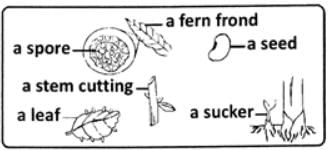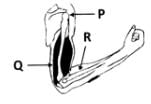Class 5 Exam > Class 5 Tests > Science Practice Test - 4 - Class 5 MCQ
Science Practice Test - 4 - Class 5 MCQ
Test Description
20 Questions MCQ Test - Science Practice Test - 4
Science Practice Test - 4 for Class 5 2024 is part of Class 5 preparation. The Science Practice Test - 4 questions and answers have been prepared
according to the Class 5 exam syllabus.The Science Practice Test - 4 MCQs are made for Class 5 2024 Exam.
Find important definitions, questions, notes, meanings, examples, exercises, MCQs and online tests for Science Practice Test - 4 below.
Solutions of Science Practice Test - 4 questions in English are available as part of our course for Class 5 & Science Practice Test - 4 solutions in
Hindi for Class 5 course.
Download more important topics, notes, lectures and mock test series for Class 5 Exam by signing up for free. Attempt Science Practice Test - 4 | 20 questions in 20 minutes | Mock test for Class 5 preparation | Free important questions MCQ to study for Class 5 Exam | Download free PDF with solutions
Science Practice Test - 4 - Question 1
The parts of different plants are shown below. All these plant parts_________.


Detailed Solution for Science Practice Test - 4 - Question 2
| 1 Crore+ students have signed up on EduRev. Have you? Download the App |
Detailed Solution for Science Practice Test - 4 - Question 3
Science Practice Test - 4 - Question 4
Which of the following types of food is called energy giving food?
Detailed Solution for Science Practice Test - 4 - Question 4
Science Practice Test - 4 - Question 6
The forces of attraction between molecules is greatest in the _______ state.
Detailed Solution for Science Practice Test - 4 - Question 6
Science Practice Test - 4 - Question 7
The best reason for including protein in a healthy diet is because it is the main source of
Detailed Solution for Science Practice Test - 4 - Question 7
Detailed Solution for Science Practice Test - 4 - Question 8
Detailed Solution for Science Practice Test - 4 - Question 10
Detailed Solution for Science Practice Test - 4 - Question 12
Detailed Solution for Science Practice Test - 4 - Question 14
Detailed Solution for Science Practice Test - 4 - Question 15
Detailed Solution for Science Practice Test - 4 - Question 16
Science Practice Test - 4 - Question 17
What can happen, if we touch electric things with wet hands?
Detailed Solution for Science Practice Test - 4 - Question 17
Science Practice Test - 4 - Question 18
I protect the heart and the lungs, I have curved Nr bones which are fused firmly together. What am I?
Detailed Solution for Science Practice Test - 4 - Question 18
Science Practice Test - 4 - Question 19
The information given below is true of
Prevents night blindness.
Helps to keep skin healthy.
Found plentiful in carrots.
Detailed Solution for Science Practice Test - 4 - Question 19
Information about Science Practice Test - 4 Page
In this test you can find the Exam questions for Science Practice Test - 4 solved & explained in the simplest way possible.
Besides giving Questions and answers for Science Practice Test - 4, EduRev gives you an ample number of Online tests for practice
Download as PDF





















